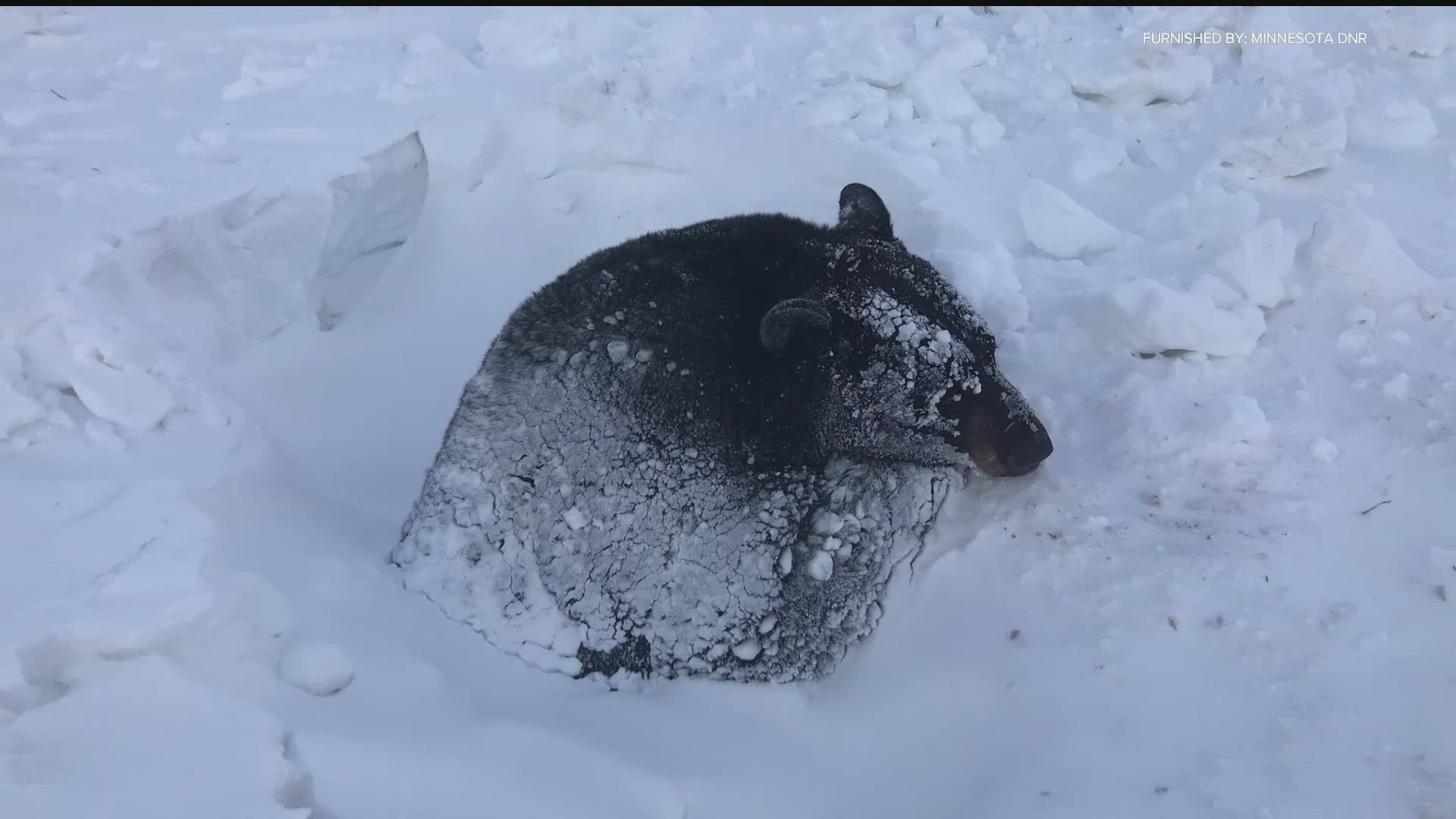MINNESOTA, USA — This has been the eighth snowiest winter in Minnesota history and it hasn't just been a headache for humans. The winter has had a much deadlier impact on the state's deer population.
Deer can adapt to winter weather, but the Department of Natural Resources says more frequent severe winters are making it harder for them to find food, move around and escape wolves and coyotes.
"Minnesotans do love deer," says DNR Big Game Program Leader Barbara Keller. "People want the best for the deer population."
The DNR uses a measurement called the Winter Severity Index (WSI) to provide a general indication of winter conditions. WSI, along with a number of other considerations, can help wildlife managers assess how well deer survive winter. This year, things look especially grim in northern and northeastern Minnesota.
"Severe winters are not uncommon in that area of the state, but that is severe," said Keller. "Those numbers are severe."
Besides deer, many animals can evolve to survive tough winters. But that doesn't mean they aren't stressed, according to University of Wisconsin Wildlife Specialist David Drake.
"It is possible they could be stressed, but again, although you have a snowy winter now, this was the norm for many, many years," said Drake. "Everything in the wintertime, if you’re going to stay here as an animal, is a cost-benefit analysis."
He says migratory animals, like robins and geese, evade winter by flying south.
Those that hibernate, like groundhogs and bears, can benefit from more snow that acts like a blanket against the cold.
And the heartiest of them, that stay here and are active, like raccoons and skunks, can encounter the most trouble.
"If it can't actually scratch down or reach the food source, that becomes problematic," says Drake. "Then if you get into these calorie deficits, that's where it gets dangerous for animals."
Winter die-offs do happen, but Drake says that's hard to track.
"These animals have all evolved to deal with these conditions and for the most part, they've done a great job at it," says Drake.
The DNR also closely watches the deer population because it determines bag limits for hunters come fall.
But don't feel too bad for them. In many counties across the state, there are deer feeding bans. Feeding them can lead to even more problems including death due to sudden diet changes and habituation.
Watch more local news:
Watch the latest local news from the Twin Cities and across Minnesota in our YouTube playlist:

